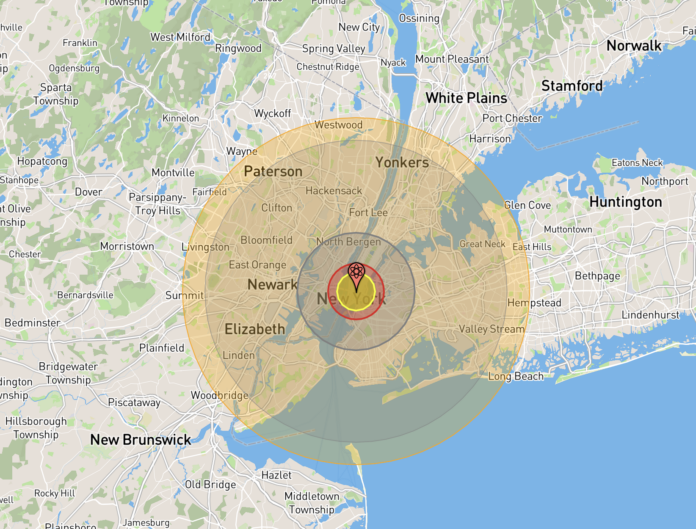A powerful nuclear gravity bomb under development by President Joe Biden’s administration is far less destructive than some other weapons in the U.S. arsenal.
The Biden administration announced last month that it was pursuing development on the B61-13 gravity bomb, a new variant of a weapon first produced in the 1960s. The new bomb, which Department of Defense officials say will not increase the overall size of the U.S. nuclear stockpile, is part of a larger effort to modernize an aging arsenal.
With an estimated maximum explosive yield of 360 kilotons, the B61-13 is among the most powerful bombs in the B61 series, which have mostly been tactical weapons with explosive yields under 100 kilotons. The B61-13 is 24 times more powerful than “Little Boy,” the 15-kiloton bomb that the U.S. dropped on Hiroshima, Japan, during World War II.
A map generated using Nukemap—an online tool created by historian of science and nuclear technology Alex Wellerstein—shows that a hypothetical B61-13 explosion over New York City would inflict mass destruction, resulting in over 778,000 deaths and more than 1 million injuries.
People and buildings would be vaporized by a fireball within a roughy half-mile radius. Miles away, buildings would be demolished and deaths and injuries would be widespread. Additional deaths caused by radioactive fallout would likely occur in the larger Northeast region.
NUKEMAP/Alex Wellerstein/Map data © OpenStreetMap contributors, CC-BY-SA, Imagery © Mapbox.
However, the maps visualizing explosions of the most powerful nuclear weapons that remain in the U.S. stockpile show that they would be considerably more destructive than the new model.
The most powerful bomb, the B83 nuclear gravity bomb, has more than three times the explosive yield of the B61-13 at 1.2 megatons, or 1,200 kilotons. A hypothetical New York City B83 detonation would cause more than 3.6 million estimated deaths and over 3.2 million injuries.
The B83 fireball would vaporize everything within a radius of over two miles, while massive destruction and damage would be seen 6.5 miles away. Lighter physical damage from the blast would be evident almost 17 miles away, while third-degree radiation burns could be expected within a 19-mile radius.
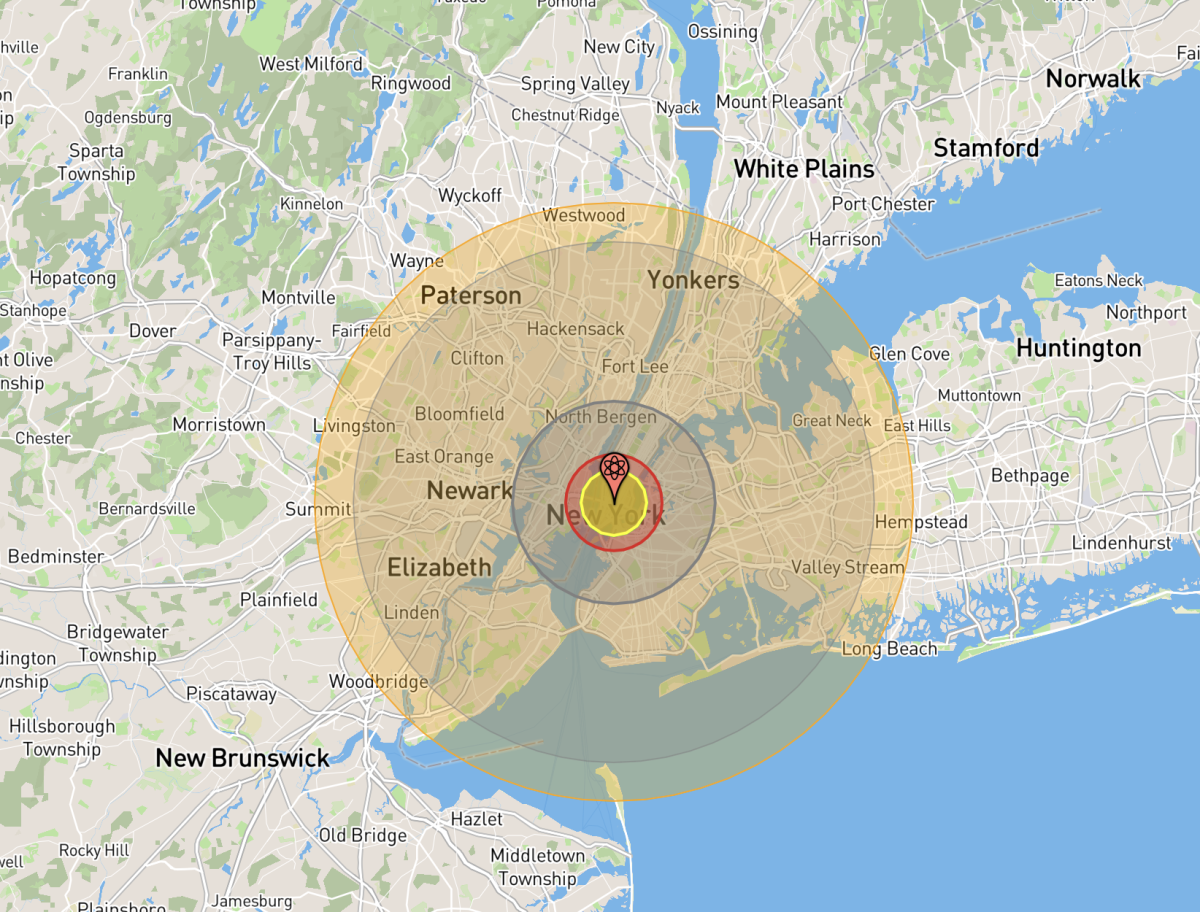
MAP DATA © OPENSTREETMAP CONTRIBUTORS, CC-BY-SA, IMAGERY © MAPBOX./NUKEMAP/Alex Wellerstein
A radioactive plume traveling northeast would cross the Canadian border and extend all the way past Fredericton, New Brunswick. In comparison, fallout created by a B61-13 explosion would extend into northern Massachusetts, ending just outside of Lowell.
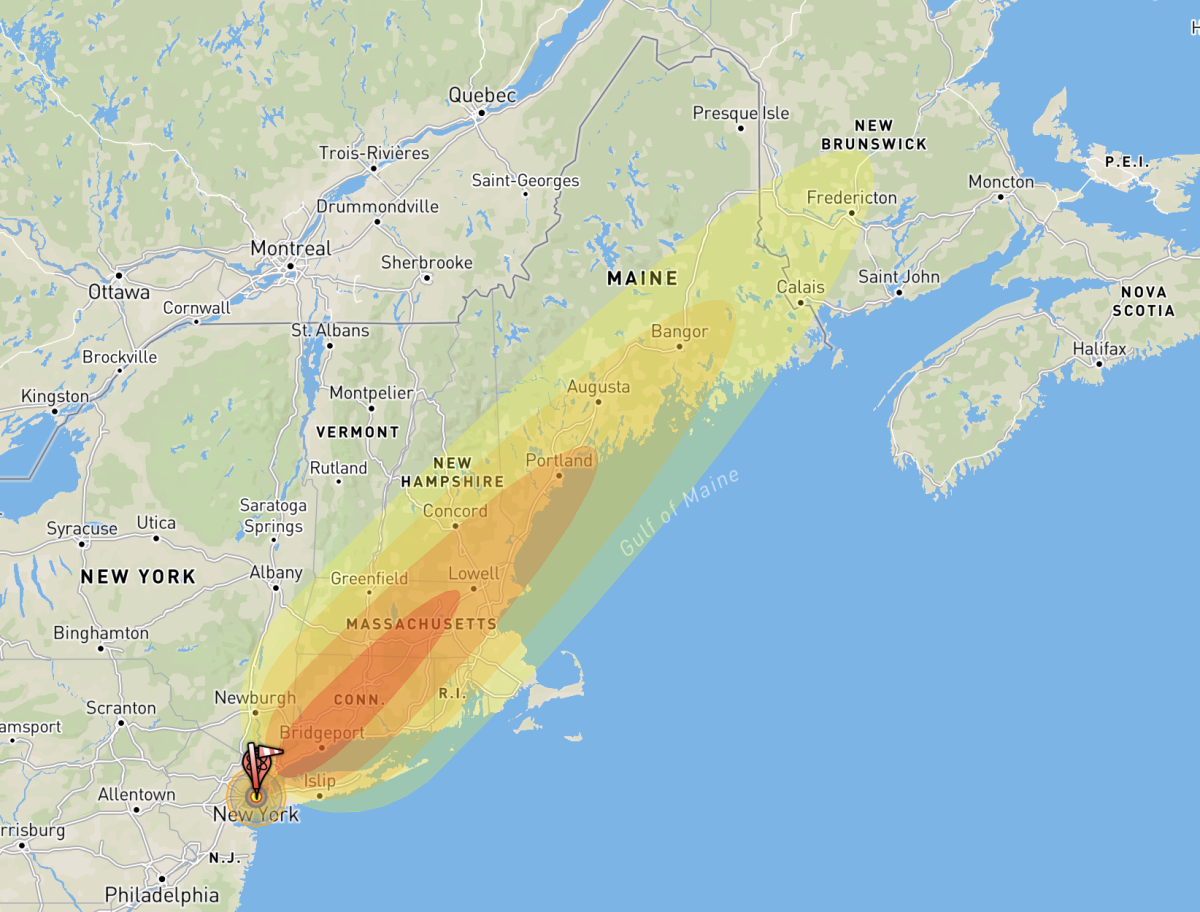
MAP DATA © OPENSTREETMAP CONTRIBUTORS, CC-BY-SA, IMAGERY © MAPBOX./NUKEMAP/Alex Wellerstein
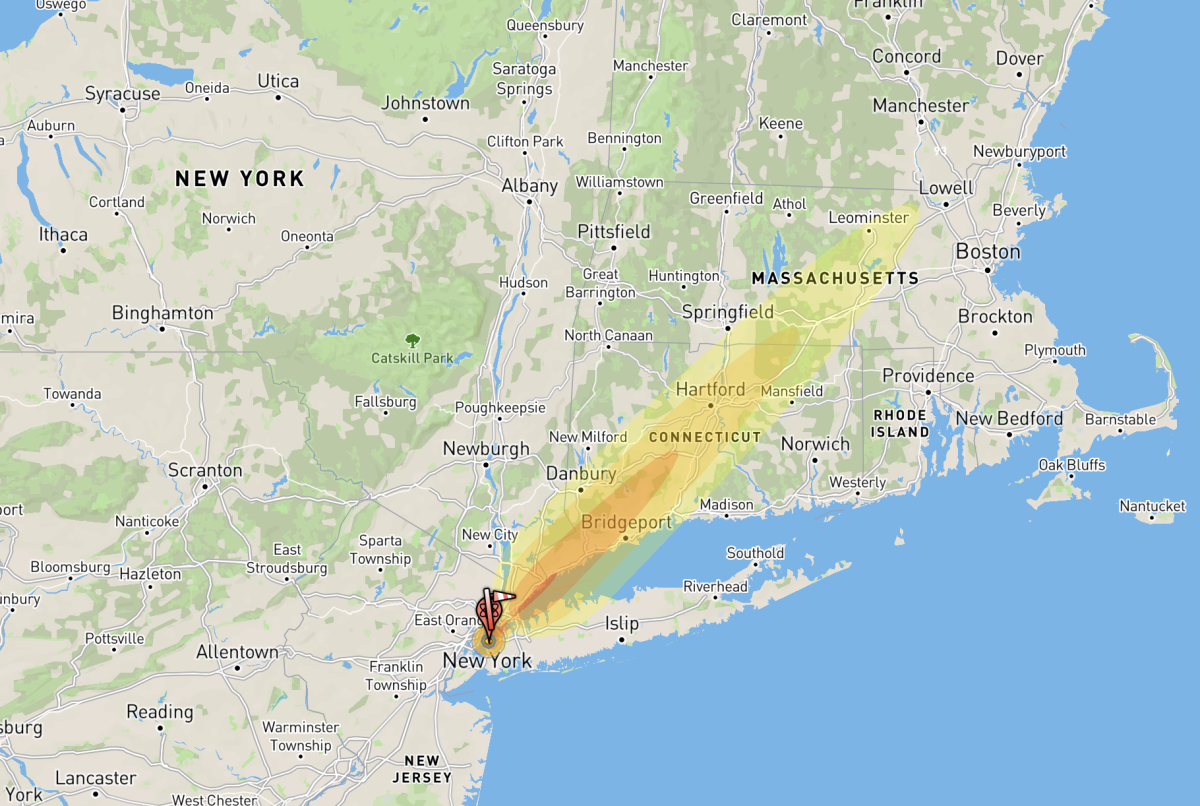
Map data © OpenStreetMap contributors, CC-BY-SA, Imagery © Mapbox./NUKEMAP/Alex Wellerstein
While the Biden administration announced plans to retire the B83 in 2022, the weapon still remains in the U.S. stockpile. The Federation of American Scientists (FAS), a group dedicated to reducing nuclear weapons, has said that the development of the B61-13 was likely “a political maneuver to finally get rid of” the B83.
Newsweek reached out for comment to FAS via email on Thursday evening.
The second-most powerful weapon in the current arsenal is the 475-kiloton W88 warhead, which is deployed on a Trident II submarine-launched missile. While the explosive yield of a single W88 is far lower than the B83 bomb, up to eight warheads can be attached to missiles equipped with Multiple Independently-targetable Reentry Vehicles (MIRVs).
A Nukemap visualization of just one W88 warhead detonating on New York City shows that it would cause significantly more damage than the Biden administration’s new bomb. More than 100,000 additional deaths would be seen in the warhead blast, killing an estimated 891,420 people and injuring over 1.1 million others.
The fireball created by the W88 would only be slightly larger than that caused by the B61-13, vaporizing roughly eight city blocks. Blast damage would be seen as far as 5.7 miles out, while radiation burns would occur within a 4.8-mile radius. The radioactive plume would extend past Windham, New Hampshire.
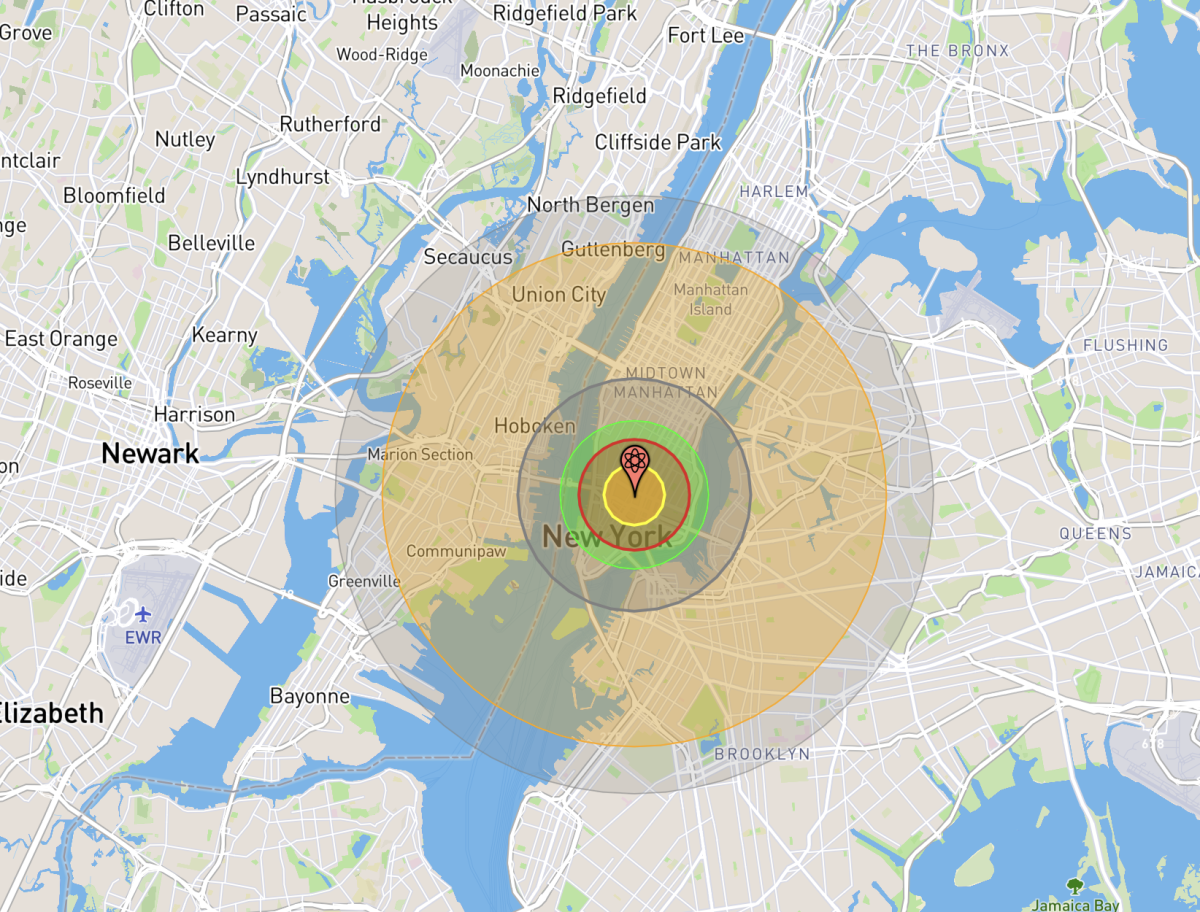
MAP DATA © OPENSTREETMAP CONTRIBUTORS, CC-BY-SA, IMAGERY © MAPBOX./NUKEMAP/Alex Wellerstein
With an explosive yield of 400 kilotons, the B61-11 is the most powerful variant in the B61 series and the third-most powerful active U.S. warhead. A map of a hypothetical explosion in New York City looks similar to the B61-13 explosion, with a slightly larger blast zone and more damage and death.
A B61-11 detonation would kill an estimated 814,560 people and injure 1,091,130 others in the city. Third-degree radiation burns would be seen within a radius of almost 4.5 miles, with radioactive fallout traveling as far as the Massachusetts-New Hampshire border.
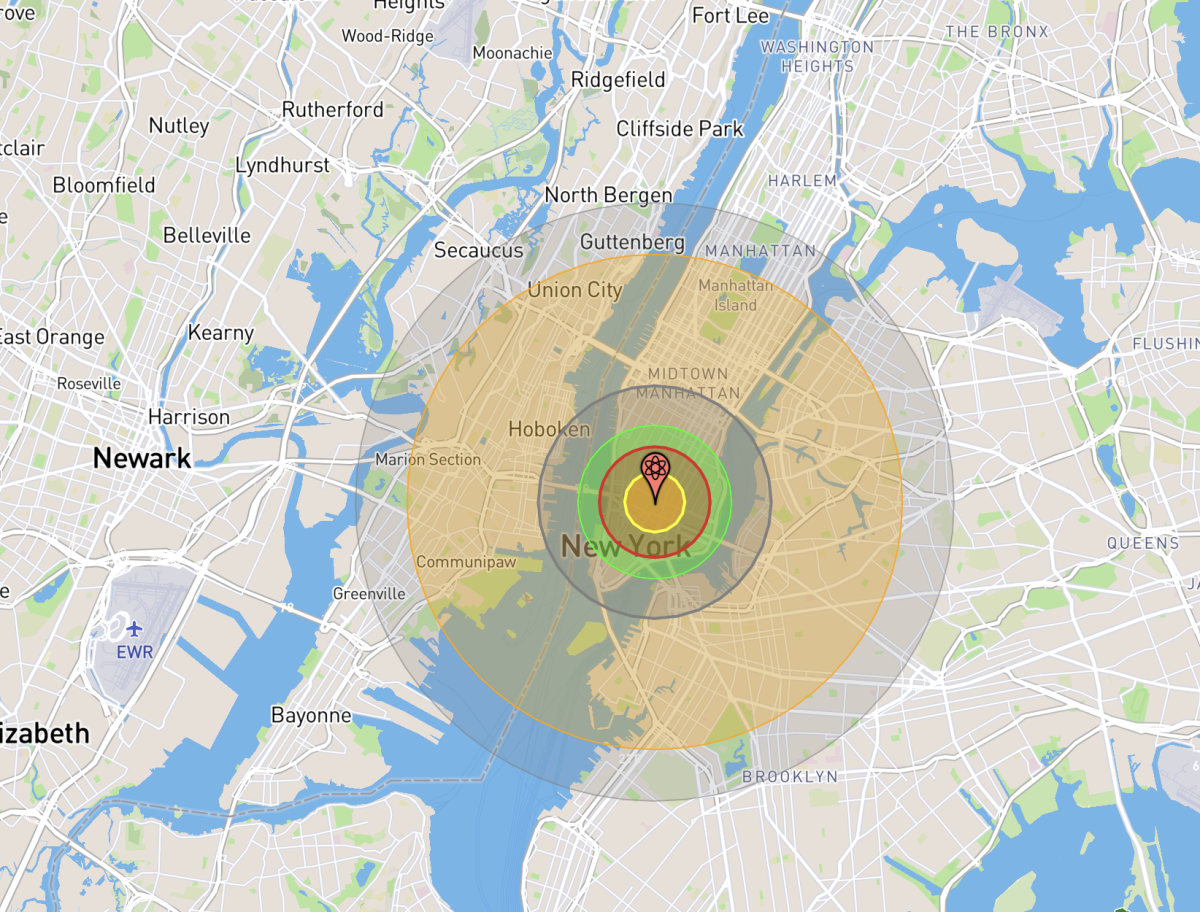
MAP DATA © OPENSTREETMAP CONTRIBUTORS, CC-BY-SA, IMAGERY © MAPBOX./NUKEMAP/Alex Wellerstein
During his 2020 presidential campaign, Biden pledged to “work to bring us closer to a world without nuclear weapons, so that the horrors of Hiroshima and Nagasaki are never repeated.”
A National Security Council spokesperson previously told Newsweek in a statement that the president’s pursuit of the B61-13 “in no way detracts from the President’s work of bringing us closer to a world without nuclear weapons.”
“The Biden Administration has taken a balanced approach between maintaining a safe, secure and effective nuclear deterrent and strong and credible extended deterrence, and taking those steps needed to reduce the global salience of nuclear weapons and bring us closer to a world without nuclear weapons,” the spokesperson said.
“Pursuing the B61-13 is in line with that approach,” they added. “It will not increase the role of nuclear weapons in U.S. strategy or the overall number of weapons in the U.S. stockpile … The United States stands ready to pursue critical arms control measures.”
Uncommon Knowledge
Newsweek is committed to challenging conventional wisdom and finding connections in the search for common ground.
Newsweek is committed to challenging conventional wisdom and finding connections in the search for common ground.


